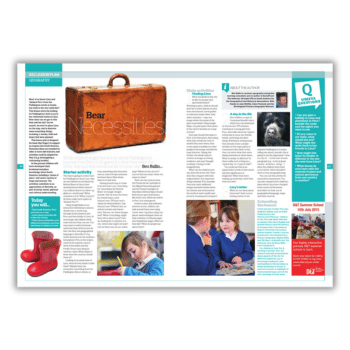While children might know a lot about Paddington’s journey from Peru to England, it’s time they went the other way and learned about life in Lima.
Most of us know Lima and ‘darkest Peru’ from the Paddington movies or books, but what is the city really like? What would Paddington experience in Peru?
This lesson starts by looking for Paddington’s Aunt Lucy in her retirement home in Lima. How close can we get to this bear and his city? As we search, we start to place Lima on the map, and discover some surprising things.
This lesson plan is perfect for lower Key Stage 2 to support an enquiry into South America. There are also extension ideas for older or more able learners. You could adapt the ideas for Year 2 (e.g. investigating a contrasting locality, imagining life with Paddington in Peru).
In the process children will have developed their locational and place knowledge about South America, including a ‘sense of place’, and used a variety of maps and sources to grasp the concept of Paddington in Peru.
The activities contribute to an appreciation of diversity, as part of social, moral, spiritual and cultural understanding.
Paddington in Peru learning objectives
- Find South America, Peru and Lima on a map, envisioning Paddington in Peru.
- Learn about everyday life in the city of Lima.
- Think about similarities and differences between our lives and those of children in Lima.
Starter activity
The class is going on a bear hunt for Paddington’s Aunt Lucy, who we are told lives in the Home for Retired Bears in Lima. This is part of our exploration to find Paddington in Peru.
Does anybody know where Lima is? Can children find it on a blow-up globe or a world map? What continent is it in? What country? (Is there really such a place as ‘darkest Peru’?)
Using Google Maps on an interactive whiteboard, zoom in slowly from a world map, through South America, into Peru and then finally to Lima.
At each stage, ask children what main features they can see. You may want to switch between aerial and map views as you do this.
Can they use geographical language to describe it? (e.g. South America is in the southern hemisphere; Peru in the tropics, south of the equator; Lima is west of the Andes and the Pacific Ocean runs along its western coast). What shape or letter does the country remind them of?
Looking at an aerial view of Lima, what do they think it is like there? (Maybe they can remember something from the Paddington films or stories, or from something else they have seen or read. Perhaps someone has been there.) Note down ideas to revisit later.
Paddington and Aunt Lucy in Peru
Having found Lima, it’s time to locate Aunt Lucy. Searching for ‘Lima Home for Retired Bears’ on Google, images include, ‘Not far from the home for retired bears, Lima’ and a ‘Home for Retired Bears’ coin, as well as tourism and nature sites.
Discuss whether these images are real. What, if anything, might they tell us about Lima? If we are looking for a real bear in a city, where else might we look?
Can we find a zoo on our online map? Where in the city is it? Can we find any bears when we zoom in close? There are two zoos in Lima: the Parque de las Leyendas in San Miguel and the Parque Zoológico at Huachipa.
Both house spectacled bears, like Aunt Lucy, which are native to Peru, but endangered. If there is time, and sufficient internet access, children can look around these zoos using ‘street view’, tag them using ‘my places’ and investigate them on their websites, Facebook pages and TripAdvisor pages.
What are they like? What do people say about them?
Ben Ballin is a primary geography and global learning consultant, and co-author of Back2Front: The Americas. He leads CPD on South America for the Geographical and Historical Associations. With thanks to Jane Whittle, Claire Paybody and the Birmingham Primary Geography Network. Download whole-school Paddington Bear lesson plans.











